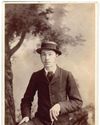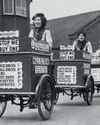Dutch photographer René Koster has an unquenchable hunger for cold climates and going into the unexplored. He speaks to Chris Cheesman about his highly acclaimed Antarctica series.

René Koster’s love affair with Antarctica was triggered by his fascination for the work of photographer Frank Hurley, who famously documented Ernest Shackleton’s epic expedition to the South Pole (1914-17). The paradoxical allure of Earth’s coldest and windiest continent led René to take sail on a tall ship, the bark Europa, on a voyage that would cover 1,600 nautical miles after first setting sail from Argentina.
While Shackleton’s ship, Endurance, hit disaster when it became marooned on pack ice, fortunately no such calamity would befall René’s German-made vessel, despite it being of a similar vintage – it was built in 1911, the year in which Norwegian explorer Roald Amundsen defeated Captain Robert Scott in the race to the South Pole.
It was Hurley’s photo of the Endurance’s predicament – combined with a keen interest in history and exploration – that set René on his Antarctica venture. ‘Hurley took the photo at night and used a flash. I felt like I was watching a negative,’ says René.
Like the most compelling stories from history, René’s images have an enduring quality. Taken in November-December 2004, they first found acclaim when they won an accolade in the Travel Photographer of the Year awards in 2006. More recently, the images experienced something of a renaissance with coverage of the project in the The Washington Post.
Dual formats
René worked in digital and film, taking some 2,000 pictures using a Kodak DCS-14N DSLR with Nikon 24-200mm lenses, and shooting Kodak Ektachrome E100VS and E100GX on a Mamiya 7 II.
The film option forced him to concentrate more on taking pictures and, as he says: ‘Think twice about it because films are still expensive and there is also money involved in developing them.’
This story is from the {{IssueName}} edition of {{MagazineName}}.
Start your 7-day Magzter GOLD free trial to access thousands of curated premium stories, and 9,000+ magazines and newspapers.
Already a subscriber ? Sign In
This story is from the {{IssueName}} edition of {{MagazineName}}.
Start your 7-day Magzter GOLD free trial to access thousands of curated premium stories, and 9,000+ magazines and newspapers.
Already a subscriber? Sign In

140 years of change
AP has become the world’s oldest surviving consumer photo magazine because we have moved with the times, says Nigel Atherton

Preserving history in platinum
A deep dive into the meticulous art of platinum printing, and the collaboration between the Royal Geographical Society and Salto Ulbeek. Mike Crawford explores how they brought historical photographs to life with enduring beauty and precision

Life in the past lane
What was life like for an amateur photographer in 1884? John Wade takes a trip back in time

Choice cuts
How many trillions of photographs must have been taken in the past 140 years? Amy Davies asked some of our regular contributors for their favourites....a difficult task, to say the least

How good a camera can you buy for just £140?
Three members of the AP team see what they can find for the money

Round Five: The Best of the Rest
The APOY judges choose their favourite images that didn’t make the top ten of our Landscapes category

Amateur Photographer of the Year
Here are the top ten images uploaded to Photocrowd from Round Five, Landscapes, with comments by the AP team and our guest judge

FILM STARS A lifetime of landmarks
Cameras that hit the headlines between then and now. John Wade is your guide

140 years of Amateur Photographer
As AP celebrates its 140th birthday next month, Nigel Atherton looks back at its glorious past

John Wade considers...World War II: Home Front 1940, by A.J O'Brien
Say the word 'Wall's' to those of a certain age and two things spring to mind: sausages and ice cream.